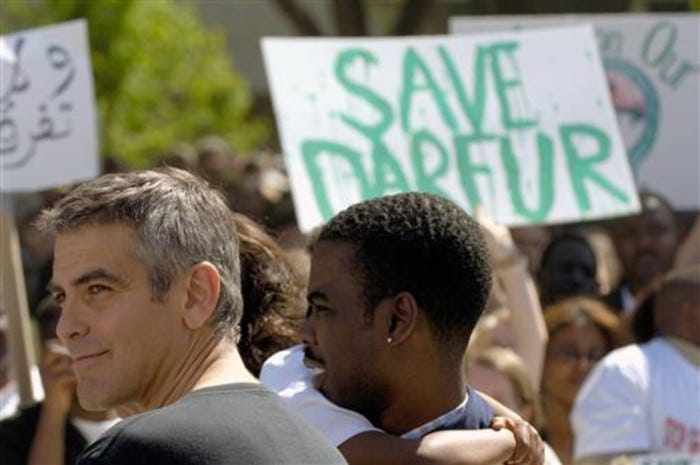– 17 May 2025 –
Janus:
People more or less understand the role that fashions and trends play in how they buy clothes or wear their hair. But how much do the same kind of fashions and trends determine who they choose to date or marry? And how much do fashions and trends determine the way that people believe and think?
Fashion choice is a luxury, and deliberate lifestyle is a luxury choice. Never in the history of humanity have people had the luxury to focus so much of their devotion and efforts towards pursuing styles, fashions, and popular trends and to ignore or neglect mere practical or utilitarian concerns. Lifestyle is more important than survival, not just for the elites, or even the middle classes, but increasingly for the rudest and most common workers and feral wanderers.
In these times especially, people choose who they date and ultimately marry (or just cohabit with) the same way that they shop for clothes or houses, and they adopt ideas and beliefs the same way that they style their hair. That is, they choose clothing, hair, spouses, and beliefs more as an expression of lifestyle and fashion, and practical concerns are increasingly secondary.
Fashions in Appearance
Fashions in clothing, hair, and jewelry come and go.
There are those lavish, luxuriant nymphs and dandies who delight in high fashions set by season. They celebrate their status and attention, setting themselves apart from the common bugs, and they seem to especially relish the pleasures of life in the here and now.
And then there are the wretched hangers-on who try to gain the trappings of the first types. Some are rewarded with membership to the club while others stand outside to hope or weep.
Then there are fashions and styles that hold popularity over decades or a few generations, and these tend to apply more broadly to common people, especially the youth and young adults. It also seems that these fashions vary, increasingly, according to ever-growing varieties of lifestyles or cliques, based on whole packages of appearance, tastes, and attitudes, all of which come and go, or sometimes evolving and splitting into new forms and niches. Beatniks in the 50’s split into hippies, yippies, homos, feminists, etc., with quite a bit of overlap among them.
The people who adopt these longer-term fashions and styles tend to do so more according to chosen or inherited “lifestyles,” very much in line with socio-economic class and/or ethnicity, and these kinds of people tend to make their choices with less deliberate focus compared to the high-fashion butterflies. For instance, how much real thought does the Zoomer boy put into his broccoli perm hair-do?
And from what spring do these longer-term styles arise? I really don’t know, but I can only assume that, behind the flamboyant homosexuals who set seasonal high-fashion trends for the rich and famous, there are unseen and unsung worker-bee designers working closely with marketers and retailers to set these more prosaic trends, catching the winds of trends in music, art, movies, and their fandoms and applying their styles into the general population. Trickle down fashion.
Downwind from these stylish, usually youth-oriented, fashions, are those people who don’t especially care about trends, but who just need something to wear while they live their lives and have to do something with their hair. They tend to adopt a more practical and utilitarian view, whether they intend to or not, because their minds are on other things. They buy clothes and wear their hair in ways that fit their immediate tastes and needs. To the extent they concern themselves with fashion, they don’t want to stand out one way or the other, nor spend considerable time, money, and effort on their appearance beyond that.
At the individual level, a person seeks a style of appearance that appeals to his or her tastes, whether those tastes are frivolous or practical or somewhere in between. In selecting clothing, for instance, lifestyle plays a large part in their tastes and choices. Consciously or unconsciously, they ask themselves, does this outfit fit their desired status? Does it complement their overall appearance in that status? Does the outfit feel normal and comfortable? Will their peers approve or disapprove? Especially in these times where we have the overwhelming luxury of self-expression, these concerns are baked into almost every decision.
So, overall, we have those who focus on high-fashion, those who casually follow generational tastes and trends, and those who take a more functional and utilitarian attitude rooted in needs and deeper culture, with these groups representing a whole spectrum of behavior and tastes from one extreme to the other.
That said, the broader styles and fashions of the times will still affect the appearance of nearly every class. There is always a broader, society-wide style that changes over time. People in the 1970’s, all around the world, kept scraggly hair and wore tight bell-bottomed pants, from the models in Paris and London to the health nuts of Los Angeles to the 40-year-old Baptist preachers of South Carolina. These broader trends and fashions just become part of the invisible breath of the herd.
Fashions in Romantic Relations
If people choose their clothes, hairstyle, and overall appearance to fit within a certain fashion or style, they choose a sexual mate the same way. Isn’t it amazing how—at a time when every little group of people looks like they came from a different planet from every other group—a romantic couple tends to share the same tastes in fashion and lifestyle, like they are models for the same product lines?

In the world of high-fashion, those same nymphs and dandies who flit through life according to the very latest tastes, further display their status and means by choosing their “sexual partners.” Their significant others, which even sometimes might become a spouse of the opposite sex, amounts to a fashion accessory to serve their status, like shoes or a purse or a car.
Those who casually belong to the club partner up. The hangers-on who seek club membership likewise join together, though they would prefer to attach themselves to the higher tier.
And the more common groups do the same thing.
They make romantic choices according to styles and trends because they largely focus their whole lives on styles and trends. Because they are mainly concerned with their lifestyles and appearances, they naturally pursue romantic relationships that complement and magnify those styles. The extent one way or another that they care about style and fashion, the more they are going to make their romantic decisions with those same cares.
The health-nut granola progressive lady mates with an urban bicyclist of the same class, maybe even reproducing sometimes. The feral fat Walmart cashier with two bastard children seeks out the feral DUI factory worker who pays child support to two more. The pretty dental hygienist powder-puff marries a clean-cut Ken doll business consultant in the suburbs, and they raise two children in private schools. These kinds of people romantically seek each other out, and they reject those who don’t fit comfortably within, or complement, their own fashions and styles.
And then there are those who are focused on other things, who don’t especially care about fashions and trends because they are just getting through life. A lot of times, they just get what they get.

When it’s a practical woman, she asks herself, consciously or unconsciously: “Will this man keep a job, abuse me or my kids, or cheat on me? Do I like him around? Can I keep him happy, or is he going to stray?” And the practical man asks, in the same way: “Will this woman take care of me and any children we have? Will she stay loyal? Do I like spending time with her? Can I afford her?” And if the answers to those questions line up on both sides well enough, then they will likely “get together,” whatever that means these days. If the couple doesn’t quite match in fashion or “lifestyle,” then who cares? They are both focused on practical matters anyway.
But most people these days devote themselves, more or less, to fashion, and they pursue self-expression, either because of their luxurious interests and hobbies, or for the status that the expression brings. They ask themselves, when shopping for clothing, does the clothing complement their lifestyle, and will their peers like it, and does it make them look good? And they shop for, or select, their romantic interests just the same way! Even those who don’t care about fashion or style shop for their significant other the same way they shop for clothes: “Do I find it acceptable? Is it comfortable? Does it fit? Can I afford it?”
So to recap, high-fashion men pick high-fashion women as a fashion accessory, and vice-versa; followers of style and tastes select mates who fit their styles and tastes; and those who focus on practical matters pick romantic relationships based on more practical concerns.
And just like there are common trends in clothing and appearance that people adopt unthinkingly, it’s also true with sexual attraction. Again referring back to the 1970’s (a time when fashion-concerns and self-expression overtook practical concerns for much of the West, at least) the ideal woman was a sassy feminist, and the ideal man a sensitive, singer-songwriter type, and these fashionable ideals tended to trickle down into even regular people living regular lives. The people follow the herd, and the herd these days breeds according to the fashions.
Fashions in Thought
Just as fashion tends to rule these days in choosing physical appearance and even in romantic relationships, fashion increasingly decides the way people think and believe.
The high-fashion people whose status depends on their fashionability are not only going to express the trendiest, most high-status thoughts and beliefs of the present year, they are going to actually think those thoughts and believe those beliefs internally. They might not be total fanatics about policing every internal thought, I suppose, just as these people can get away with looking like a slob in public now and then, but this elite would never be caught dead in public having expressed some faux pas thought! The term “cause célèbre” applies to people like this; few people would have ever heard of Darfur or Joseph Kony if it wasn’t for these brief ideological fads.
Ironically, the most fanatical devotees of fashionable thoughts are those wannabe hangers-on, those working for membership in the club. They will not only most vehemently express all the right thoughts and beliefs, they will police the expressions of others around them, and will warp their minds into—what we might call—right belief, fanatically and without doubt, even changing their minds illogically as the fashions change.
If the common trend-follower of the world doesn’t dance to every cause and issue that Hollywood actresses stitch to their ball gowns, or that Grammy-winning stars rap about in auto-tune, they at least pick up the overall trendy attitudes and beliefs of the times, mostly without a thought, and in accordance with their particular lifestyles. Those who are tuned in have their particular belief-sets, and they tend to express their views within the “Overton window.” Even if their lifestyle-opinions oppose some of the fashionable views, dissenters will still frame their opposition within the moral fashions of the times. “I’m not racist, but…” “The Democrats are the real anti-feminists…” “Christianity is good for the LGBT community…” Ad nauseum.
So how do these average people choose their thoughts and beliefs, anyway? They consume and follow the same fashions, upon which the trendsetters attach beliefs that accessorize those fashions, and it all forms a package of lifestyle. And these days, to not have an opinion or interest in these promoted causes isn’t fashionable. Everyone must be invested in at least an acceptable ideology!
There are plenty of people who don’t especially follow these trends, and who don’t especially hold deep opinions about the blather being presented in media. They probably follow the media, because the smartphone and social media have penetrated down to the most unfashionable corners. Even the Amish increasingly use them. But the prime focus of such people when holding or expressing opinions is practical: how does it affect them in their lives?
In summation, high-fashion people uphold high-fashion thoughts and opinions. Everyday trendy people with their trendy lifestyles hold packaged beliefs and opinions that accessorize their lifestyles, though sometimes it works the other way and people take on lifestyles that accessorize their beliefs. And those who don’t care about fashion tend to hold practical thoughts and opinions that matter in their everyday lives.
Then, just as unthinking styles permeate society within fashions of appearance and romantic pursuits, unthinking styles of thought and belief take the form of societal assumptions. Using the 1970’s again, in that decade practical feminism began to really set into the culture, down to the lowest levels of society, as did racial civil rights and easy divorce.
When someone expresses a fashionable opinion, it usually reflects a societal echo chamber; likewise, the fashionable or acceptable response. When someone expresses an opinion that almost universally brings ridicule, condemnation, or even total disengagement and incomprehension, then it doesn’t fit the “Zeitgeist,” or fashion of the times.
People are herd animals who think they are free individuals who just happen to like the herd.
Conclusion
It’s almost unheard of for people to make their own clothing nowadays. They therefore buy something according to a marketed trend and style.
Increasingly, people tend to meet or seek out their romantic interests through the lens of some kind of lifestyle. They meet online or among peers who work in the same career paths and live in the same kinds of neighborhoods, and they increasingly don’t talk to people in public. Their relationships increasingly follow styles and trends. As the fashions grow shallower, so do the relationships.
Likewise, people express opinions and thoughts that fit their fashion tastes, shunning those that don’t. Certainly, in theory, they could “think for themselves,” and doubtlessly most people fully believe that they do think for themselves. (How dare anyone suggest otherwise!) But they think for themselves within the particular lifestyles that they select, and they lack the imagination to think of something else, or the audacity to express such thoughts in public if they did happen to think of something unfashionable.
There is the trite old question: does art follow life, or does life follow art? Well, it’s a little of both, but in decadent times like today, there is much more of the life-following-art situation. And art follows fashion.
Then there is the question, who designs and sets these fashions? And furthermore, who pays the salaries of these fashion-designers, and who pays to disseminate their products?
To the extent that people devote themselves to fashion, they live in the moment, like seasonal weeds for the System. To the extent that people devote themselves to the practical, they live for the longer term, like trees standing on their own year after year. To the extent that people devote themselves to the eternal, to God and His order, they stand for eternity.










